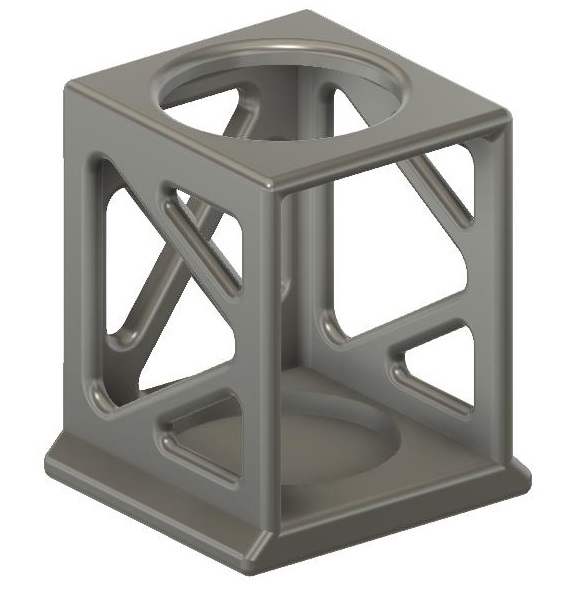From the French Side of Profweb: A Summary of Some of the Articles Published in French during the Winter Session of 2019
Yes! It’s that time of year again, and the editors at Profweb would like to give you some highlights from posts published in French that have not been translated and published in the English edition.
Two popular topics: fabrication laboratories and student interaction in online courses were the objects of several posts.
How to turn your classroom into a fab lab
Several articles dealt with bringing project-based learning into the classroom by setting up fabrication laboratories or using digital printers.
Jean-Pierre Dufresne, a former pedagogical counsellor for the Vitrine technologie-éducation wrote 2 articles of interest for teachers who would like to implement a fab lab in their college. In his 1st article, Pourquoi et comment intégrer un atelier de fabrication numérique dans un établissement collégial? Jean-Pierre discusses:
- the pedagogical relevance of digital fabrication laboratories
- the winning conditions for a successful college fab lab
- the advantages of a full toolkit
In the 2nd article, he suggests a method to follow in order to implement a pedagogical fabrication laboratory in your classroom. In Un modèle à développer pour l’intégration pédagogique d’un atelier de fabrication numérique, Jean-Pierre explains that, in this type of classroom, emphasis should very much be on the process rather than on the final product. Teachers should adopt a maker pedagogy approach that guides learning through a series of reflections based on a problem-solving process.
If you’re wondering what teachers and students in the science program can do with a 3D printer you should read both of Pierre-Olivier Paquet’s real-life stories.
In Qu’est-ce que des enseignants de sciences de la nature peuvent faire avec une imprimante 3D he gives 4 amazing real-classroom examples of practical objects teachers had printed for use in their courses:
- a model larynx for biology
- a prototype for metal resistance trials in physics
- a set of 3 magnetic arrows to represent vectors on a whiteboard in math
- a support for 5 ml vials for the chemistry lab
Pierre-Olivier presents some pedagogical scenarios he developed to meet the program objectives by enabling science students to use a 3D printer in Qu’est-ce que des étudiants peuvent faire avec une imprimante 3D: un exemple en chimie et d’autres dans toutes les disciplines de sciences de la nature.
For instance, in the General Chemistry course having students produce 3D printouts of various molecules such as adrenaline, octanitrocubane (a high explosive) and theobromine (found in chocolate) generated a lot of enthusiasm. The article also contains ideas of pedagogical scenarios for math and physics.
Online courses
Online learning can bring college education to the students despite scheduling and geographic conflicts. With all of the benefits come a certain number of challenges to teaching successful online courses.
Profweb’s very own Catherine Rhéaume discusses these issues and proposes some interesting strategies to ensure student success, following 2 online workshops she attended:
- a round table organised by the REFAD (Réseau francophone d’enseignement à distance) on March 7, 2019
- testimonial given during the Distance Learning Week held by the FADIO (Formation à distance interordre – Bas-Saint-Laurent-Gaspésie-Îles-de-la-Madeleine) on February 21, 2019
When online courses are given in synchronous (at the same time) mode several students can feel anonymous. The following tips to create a positive classroom climate that will engage students are discussed in the article Créer un sentiment de présence dans les cours en ligne en mode synchrone :
- Keep a visual contact: have students turn on their cameras whenever possible and break the ice at the beginning of a course by having students introduce themselves.
- Have students meet other people in the class by getting them to work in small groups. Several online platforms offer that feature.
- Ask students to use their camera and microphone when they have a question to ask or a comment to make.
In the article, Outils technologiques pour susciter l’interactivité dans les cours en ligne en mode synchrone, Catherine presents various digital tools to use to encourage participation in online courses. Quite a few options are explained, from Fluky, a friendly randomizer to call on students, or how to “raise your hand” online, to using online interactive whiteboards as well as polls and surveys.
How to keep students engaged and participating in an asynchronous online course is the object of the article: L’interactivité dans les cours en ligne en mode asynchrone. Catherine mentions H5P and other platforms to create video-based tasks and Flipgrid, an interactive forum where, rather than writing, students post video responses to their colleagues’ questions or comments. Another way to foster interaction is to require students collaborate in a wiki, Google Doc or on Framapad [French].
Sample video [in French] enriched with H5P. Watch the video, read the annotations and answer the questions!
Unfortunately there isn’t enough space to comment on all of the great stories, however, congratulations are in order for all of the authors on the French side of Profweb. Once again they did an amazing job of providing the college network with inspiring stories and resources!
Please let us know if there are some of the articles that you would like to see translated.


